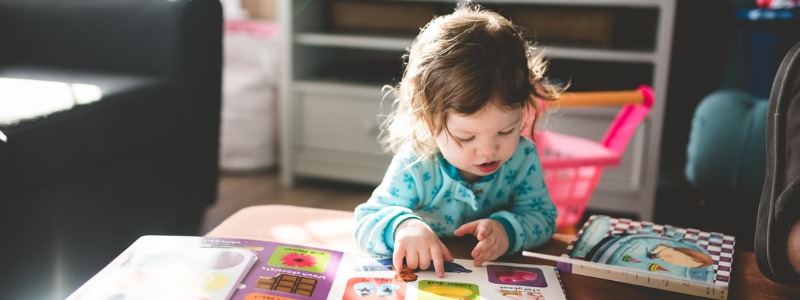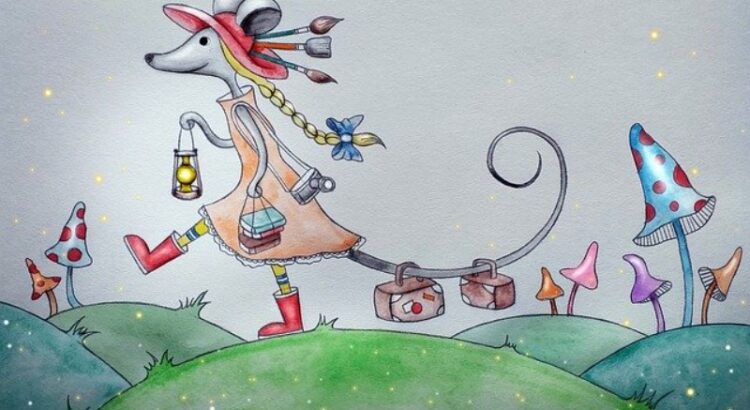Spark Your Child’s Creative Thinking
Raising a creative child has little to do with nature and a lot to do with nurture. Creativity isn’t “born”. We all have the capacity for creativity, and if we encourage our creativity, it will grow.
No one can guarantee that your child will become the next Picasso, buy you can give them a head start by providing them with all of the tools they need to think creatively. Art projects, building blocks, and imaginative play can help your children improve their creative thinking skills and expand their imaginations.
Here are some simple steps you can take right now to nurture your child’s creative spirit.
Play thinking games with your child
Encourage her to think, to dream, to explore ideas. “What would happen if,” is a good start. What do you think would happen if we took a bath before we went out to play, instead of at night before bed?” “What would happen if we put red ice cubes and blue ice cubes in a glass to melt?” Other favorite thinking games include, “I spy with my little eye….something ______________.” You fill in the blank. Perhaps you say “something red.” Then your child starts naming red things he sees in that room. “Is it the coffee pot? The curtains? The magazine?” If she doesn’t guess in a few turns, you add another clue. “Something red and square.” The game continues until she guesses the item. Then it is her turn to make you guess. For more ideas on thinking games or activities, visit the lessons page.
READ! A Lot!
Read books to your child. Lots of books! Reading broadens the brain, stretches the horizon, builds strong character, helps the child to gather lifetimes of experience. Highly creative people are readers. They read everything. Don’t just read your child pictures books. Read to him off the backs of cereal boxes. Read road signs to him. Read a magazine article to him. Read the dictionary and the encyclopedia. Read children’s non-fiction. And help him learn to read when he’s ready, but don’t push early reading if he is not ready.

Set boundaries and limitations
Total freedom inhibits creativity. Think about that – if you can do anything you want any time you want, you don’t have to think up a creative way to achieve your goals given your situation. Total freedom creates anarchy and laziness. We don’t live in a totally free world. We have to obey the law, and we have to get a job. Our children should learn to live within these limitations. Our children should have set bedtimes. They should have a time to eat, to take a nap, to take a bath or shower, to pick up their toys, to do their chores, and a time to play. Within those boundaries and limitations, encourage your child to find ways to enjoy them. “Can you pick up all the yellow toys before the timer goes off?” “Can you find five toys that float?” “Can you make a face on your pizza (or pancake) with these topping ingredients?”
Don’t watch T.V.
Ever. It is a proven fact that TV turns your brain to mush and worms begin to feed on it. 🙂
Take your child outside often
Go for walks. Go to the park, the zoo, the baseball diamond, a parade, the fire station, the coffee shop. Walk, don’t take the car. If you live too far away, drive to town, but park in a parking lot away from your destination and walk around town. Bring a wagon or stroller if your child is younger. We need to be outside. Our bodies synthesize vitamin D from sunlight. We need at least 1 hour outside every day, or we become vitamin D deficient, which is linked to many diseases and health concerns including high blood pressure, several cancers, osteoporosis, seasonal adjustment disorder, rickets, and diabetes. But since this post is more on creativity than health, going out for a walk is a great way to stimulate the brain.
Listen to music
Not just the radio. Leaving a radio on all the time does more harm than good. Children learn to ignore, or tune out, instead of learning how to listen. Make music special. Play it at special times, then turn it off. Play a variety of music. Play folk music, blues, jazz, contemporary, even Disney musicals. Encourage your child to dance to music, to move, even to color a picture of the way the music makes him feel. Taking music lessons may also be a good idea, with the right teacher.
Instead of Coloring Books
Give him large sheets of blank paper when he colors, not coloring books. Encourage him to make his own pictures. Coloring in coloring books is a way of passing time, but not of creating art. Provide for a variety of art experiences. Maybe he will color on Mondays, paint on Tuesdays, sculpt with clay on Wednesdays, cut and paste collages on Thursdays, and choose his favorite on Fridays.
Make Art with your Kids
Making art with your children is one of the best ways to create a positive creative environment in your home. Art is an vital way for children to express themselves and develop their creative skills. It improves their fine motor skills and allows them to let their imaginations run wild. Make sure your home is always well-stocked with craft supplies. You don’t have to go out and buy everything at Hobby Lobby, but some crayons, Play Doh, and colored paper can go a long way toward encouraging your children to express themselves creatively on a regular basis.
Instead of Battery-operated toys
Provide open-ended toys, remove all battery or electric powered toys. Have your child play with blocks, not electric trains. Have him play with puzzles, not video games. Let him build a fort out of your kitchen table, with some sheets and blankets and clothespins, instead of buying a fort from a box.
Teach her new vocabulary words
As a toddler, he is learning new words all the time. Help him to name everything he sees. “This is a tree, but that is a bush. See how much smaller it is? What’s that one over there, a tree or a bush?” Preschoolers know a lot of words already. Now it is time to begin the word-a-day that you will do for the rest of the time he lives under your roof. Chose a new word, print it on a card, and post it either near the calendar or kitchen table. Use the word ten times that day, and ten times tomorrow. You can stop reviewing that word when you hear your child using it correctly. Children with large vocabularies out-perform their peers on standardized tests. Children with large vocabularies can express themselves more clearly. No, they are not feeling angry. They might be frustrated or overwhelmed or chagrined, but children with small vocabularies will still just be angry.
Love her unconditionally
Now we come to the single most important way to encourage your child’s innate creativity. Love her! Love him lots. Tell him all the time. Hug him before breakfast and say, “I love you.” Hug him often. Continue to tell him how much you love him, even as he grows too big to hear it. Find a fun way to love your growing child that won’t embarrass him in front of his peers. Children who know, absolutely know, they are loved, are free to reach their full potential.
Thomas Edison flunked math in school. His neighbors and teachers didn’t think he was very bright. He sat on a nest of eggs once when he was ten years old, to see if he could hatch them! His parents didn’t pressure him to apply himself more. They didn’t over-schedule his free time with soccer, Tee ball, music lessons, scouting outings, and field trips. He had the time to sit on a nest of eggs to see what would happen. Thomas Edison, who was awarded 1368 separate patents, named the most influential figure of the millennium, had a mother who loved him unconditionally.
